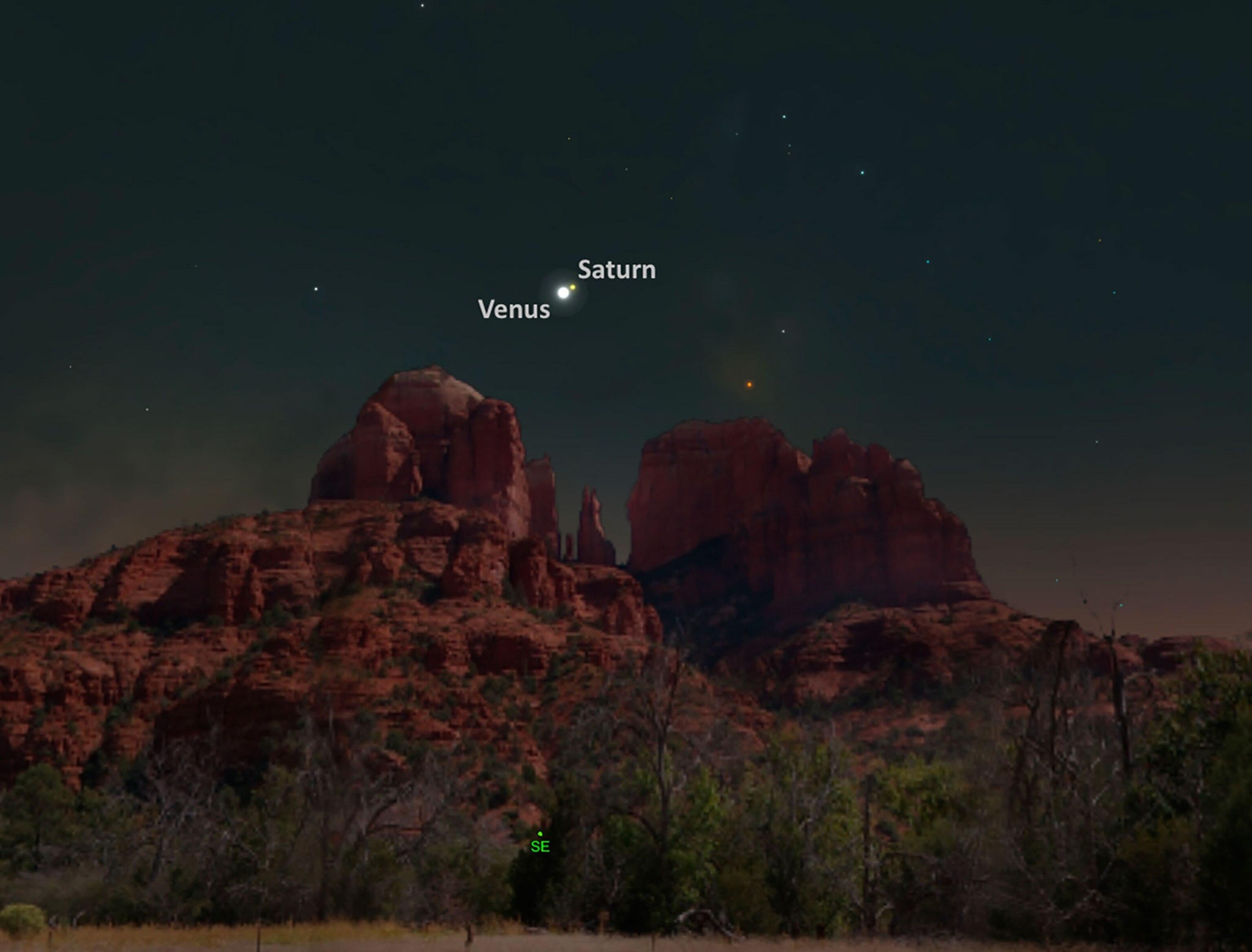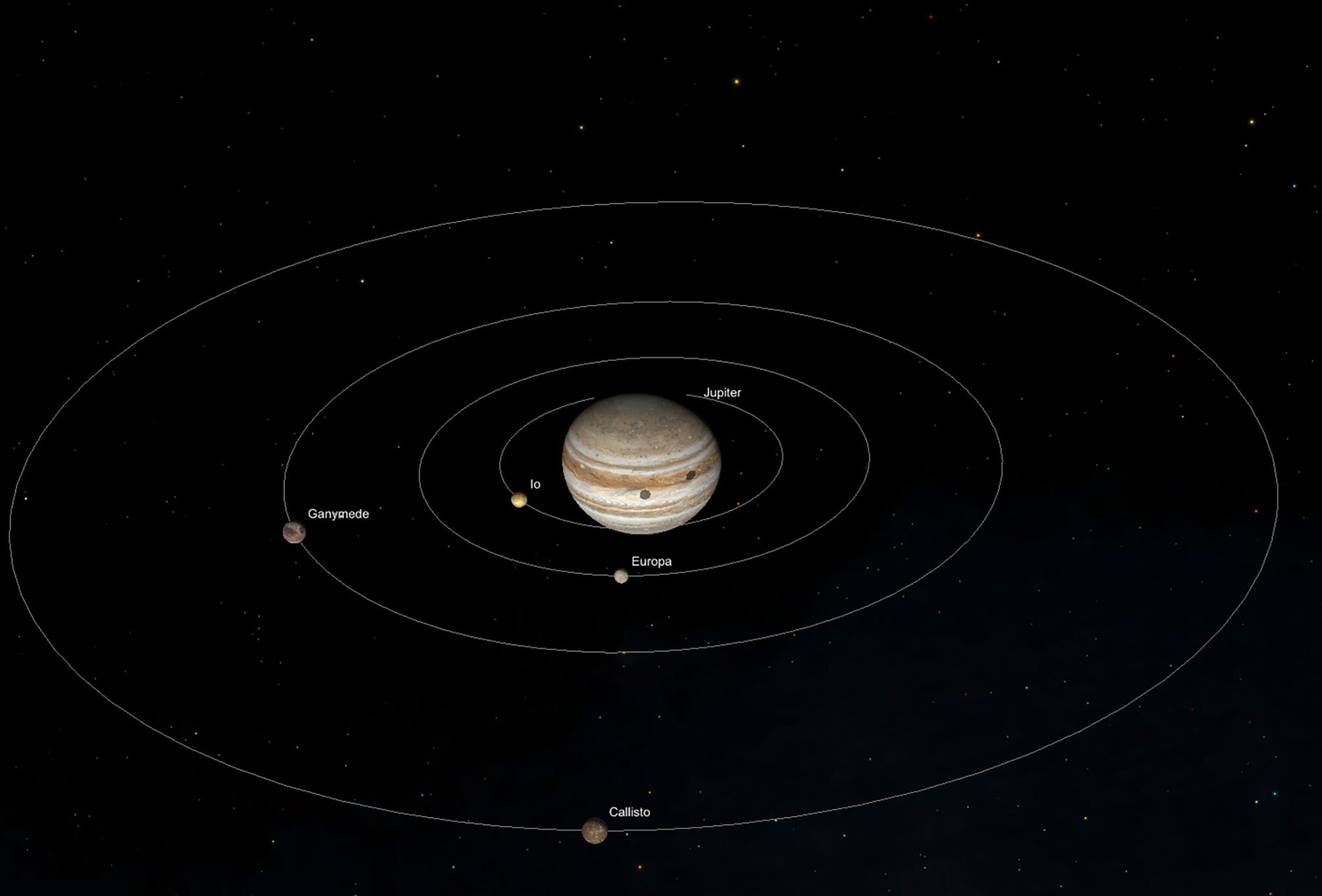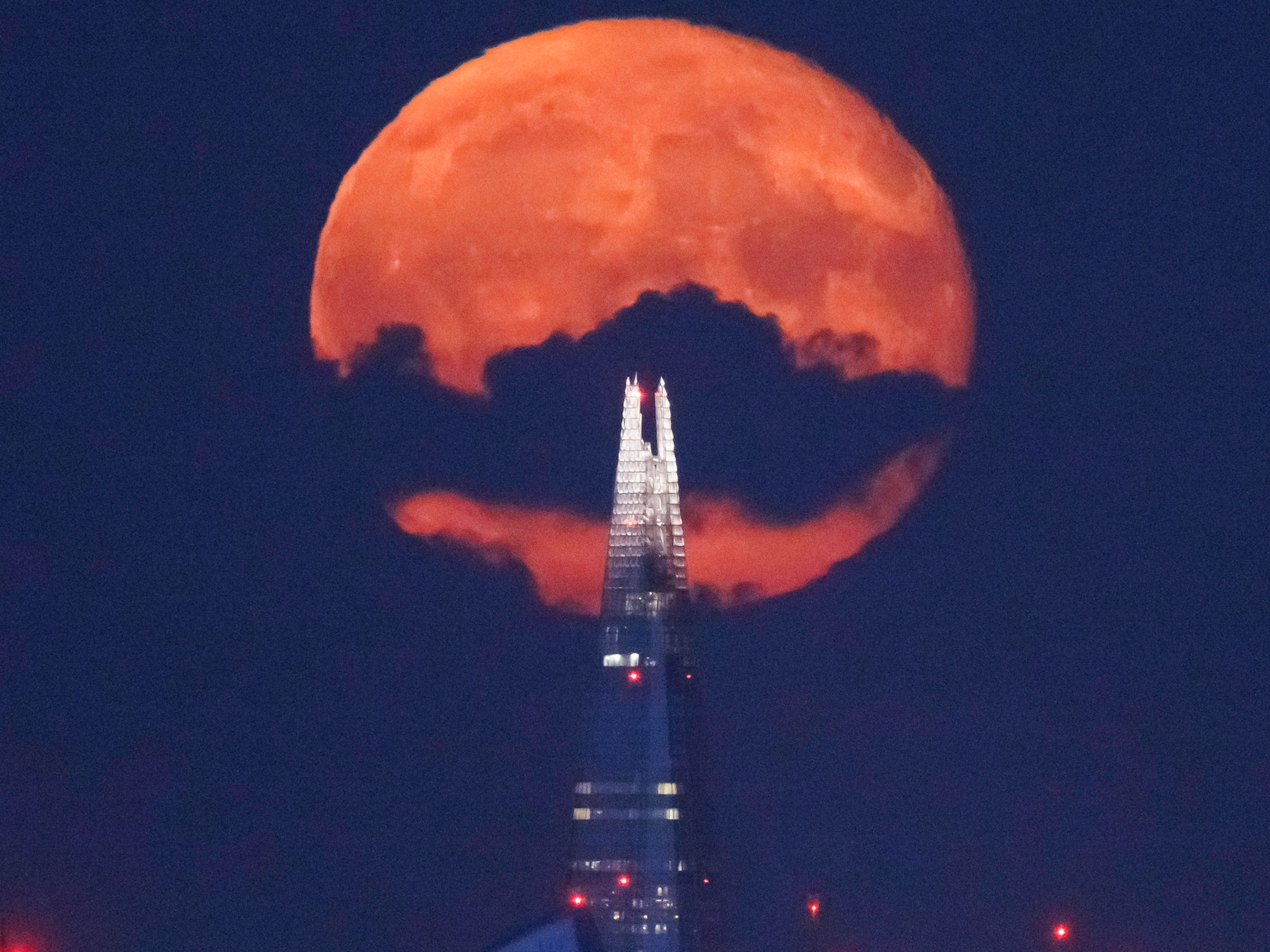
This Week’s Night Sky: Close Encounters With Planets
Watch shadows dance across Jupiter on Sunday night.
Meteors Sprinkle. After nightfall on Monday, January 4, look for stragglers at the tail end of the new year’s first meteor shower, the Quadrantids, which peaked early this morning.
From a dark location, expect at most a dozen shooting stars per hour radiating from the northeast sky, just off the handle of the Big Dipper. This is the site of Quadrans Muralis, a constellation no longer recognized by astronomers but which gave the Quadrantids their name.

Lunar Lineup. Look toward the southeast horizon an hour before sunrise on Wednesday, January 6, for the waning crescent moon perched above brilliant Venus and Saturn. The cosmic trio will form a dramatic alignment with the moon 7 degrees above the brighter planet Venus.
By the next morning, Thursday, January 7, the moon will have sunk beside Saturn and be separated by only 4 degrees. Adding to the celestial beauty, the bright orange star Antares, in the constellation Scorpius, should be visible to the lower right of Saturn.

Venus and Saturn Join. At dawn on Saturday, January 9, skywatchers get a chance to witness a spectacularly close encounter between two bright planets that will be visible with the naked eye. On this day, Venus and Saturn will appear closer together than at any other time in the last decade.
Europeans will be able to see the pair at their tightest, when they are just 5 arc-seconds apart, at 4 a.m. GMT. By the time the planets become visible in the low southeast skies of North America they will have separated a bit but still be less than half a degree apart, less than the width of a pencil held at arm’s length.

The two worlds are quite low to the horizon, so they may be a little challenging to see through the glare of dawn. Also, Venus will be far more brilliant than Saturn and may overwhelm the ringed world’s light. However, binoculars will easily show off the two worlds, and the planets will readily fit within the same field of view through a telescope.
Jovian Shadows. Late on Sunday, January 10, and into the overnight hours, telescope users can watch as Jupiter’s three largest moons travel in front of the largest planet in the solar system.
The sky show begins at 11:37 p.m. ET, when Europa’s tiny disk begins its trek across the planet, a journey that ends at 2:21 a.m. ET on Monday. Calisto then starts its transit at 3:04 a.m. ET, followed by Io’s shadow, which will touch the gas giant’s disk at 4:22 a.m. ET. Finally Io itself will begin to move in front of the planet at 5:27 a.m. ET.
All this action takes place so far away that the sunlight reflected off Jupiter and its moons takes 41 minutes to reach our eyes here on Earth.
Clear skies!
Follow Andrew Fazekas, the Night Sky Guy, on Twitter, Facebook, and his website.





